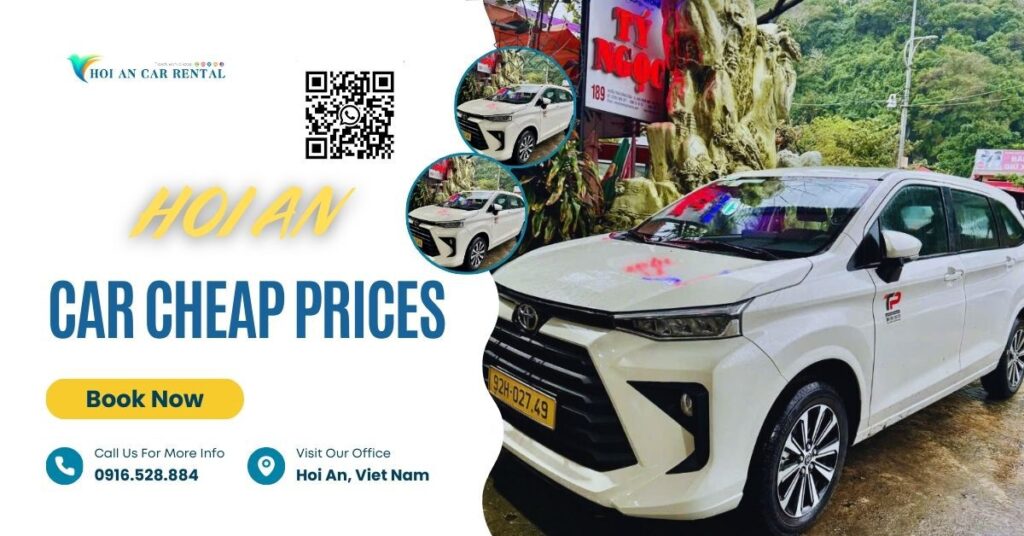Navigating Hoi An Vietnam’s Roads: Is it Safe to Drive?
Hoi An, Vietnam, with its vibrant culture and stunning landscapes, draws adventurers from around the globe. But venturing onto its roads can be an adventure of its own kind. While the country offers incredible road trip opportunities, it’s essential to be aware of the unique traffic dynamics and safety concerns before getting behind the wheel.
Click to book CHEAP private CAR via WhatsApp ›
For any further information about the Hoi An CHEAP private car please get in touch with the hotline 0916528.884 (Ms Tina)

Hoi An car rental
A Symphony of Horns and Two-Wheelers
Vietnam’s traffic, especially in bustling cities like Hanoi and Ho Chi Minh City, is often described as “chaotic” and “organized chaos.” Motorbikes reign supreme, weaving through traffic with an almost balletic grace. The constant symphony of horns might seem jarring at first, but it serves as a form of communication, signaling intent and position.
Road rules, while technically in place, are often interpreted loosely. This can lead to unpredictable situations for those unfamiliar with the flow. Pedestrian crossings don’t necessarily guarantee right of way, and merging into traffic requires a certain level of assertiveness.
These prices are estimates for private car rentals with a driver, including fuel and tolls. Always confirm with the agency for accurate quotes.
| Hoi An CHEAP private car | ||
| Route | 4-seater Sedan | 7-seater SUV |
| Da Nang Airport to Hoi An (1 way) | $10 – $12 | $12 – $15 |
| Da Nang to/from Hoi An | $11 – $15 | $14 – $18 |
| Da Nang to Ba Na Hills | $14 – $18 | $16 – $22 |
| Da Nang to/from Hue | $45 – $55 | $50 – $60 |
| Da Nang to Phong Nha | $100 – $130 | $120 – $150 |
Safety Concerns: Statistics and Reality
While the traffic appears daunting, official statistics paint a somewhat mixed picture. Road fatalities in Vietnam have actually been decreasing in recent years, according to the World Health Organization. However, the numbers remain relatively high compared to developed countries.
The most common accidents involve motorbikes, often due to speeding, reckless driving, and drunk driving. Poor road conditions in certain areas and a lack of proper safety gear also contribute to the risks.
Tips for Staying Safe on Vietnam’s Roads
If you’re considering driving in Vietnam, here are some crucial safety tips:
- Get the Right License: Ensure you have an International Driving Permit (IDP) along with your home country’s license.
- Start Slow: Begin your driving experience in less congested areas to get accustomed to the flow.
Defensive Driving is Key: Be constantly vigilant, anticipate unexpected maneuvers, and maintain a safe following distance. - Embrace the Horn: Use your horn to signal your presence and intentions.
- Helmet Up: Always wear a helmet, even as a passenger on a motorbike.
- Consider Alternatives: For navigating cities, consider taxis, ride-hailing services, or the readily available motorbike taxis (“xe ôm”).
Exploring Vietnam by Road: Worth the Challenge?
Despite the challenges, driving in Vietnam offers a unique perspective of the country. With careful planning, a defensive driving approach, and an adventurous spirit, navigating Vietnam’s roads can be a rewarding experience. Just remember to stay alert, be patient, and embrace the organized chaos.



